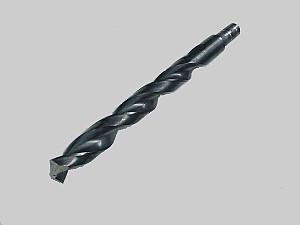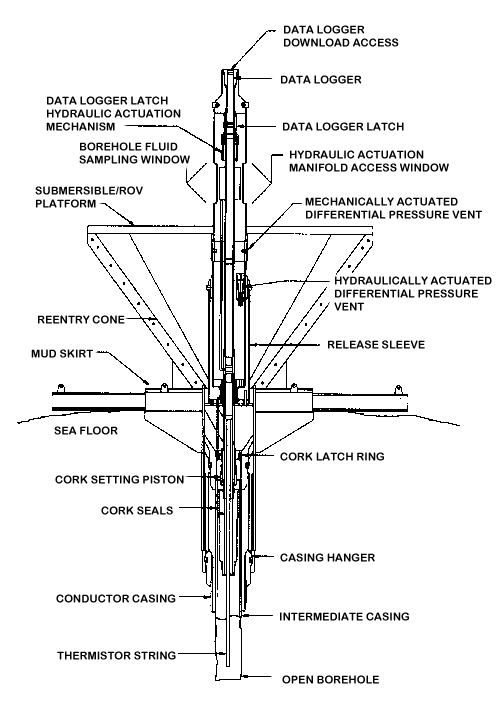Drillette ROV
In the design of Drillette, the initial core sampling depth capability will be one meter. With it's multi-coring drill, it will be able to take 4 core samples at once. It's structure and makeup will be similar to the Tiburon ROV (courtesy of MBARI) under design today, but will exclude sensors and alternative sled packages. As time progresses in our research in the Edmond Vent System, research on extending the depth of our drilling capacity will also progress. The most promising idea is ten 1 meter segment drill cores which the ROV pieces together as it drills meter by meter. This would save on the major problem of having a 10m rod extending from the ROV and causing it to be more inefficient in terms of energy use and mobility. More than likely, the machinery involved in this process will replace the room taken up by the multicoring drill system, and make Drillette the lean, mean, 10m drilling machine she was meant to be.
Drilling requires much more power than our other vehicles need. That creates complications, because the manned vehicle cannot carry enough battery resources, hence, a cable from the habitat is mandatory. The Distant Drilling Station provided the solution.

Basically, with the DD Station, Drillette will only need to be able to swim out to the station autonomously, then hook up to the Station to get power and human controllers to do her precision drilling. One would anticipate that taking core samples in just one vent area, the one close to the Station, is sufficient for the first 6 months of operations. If the geologists finish the analysis and find it worthwhile to enact another set of excavations, they will already have the basic logistics from this project.
Technical Specifications
Depth Capability: 4000 meters (13,123 feet)Weight:2500kg - 3500kg
Rough Power Use: ~15 kW
Tools
Diamond-impregnated drill bitsMulti-coring drill
Variable buoyancy system to allow low disturbance operation at all depths and during sampling operations
Electric Thrusters
High resolution video cameras
Fiber optic telemetry (DDC)
Altimeter
Acoustic Doppler Speed Log
HMI lighting (available from Deep Sea Power and Light)
Click for more details about tools
The holes left behind by the drill can be filled in with the revolutionary equipment called corks. These are large devices that measure temperature and conduct fluid sampling on the material within the holes. they provide a long term means for measuring and recording data. Unfortunately, their current operating temperatures peak at 350 C, so they would not be used near a vent area. Hopefully, the design can be adapted to deal with larger temperatures. They can be deployed by the unmanned vehicle, Alvin.
Image courtesy of Science and Curation Services


